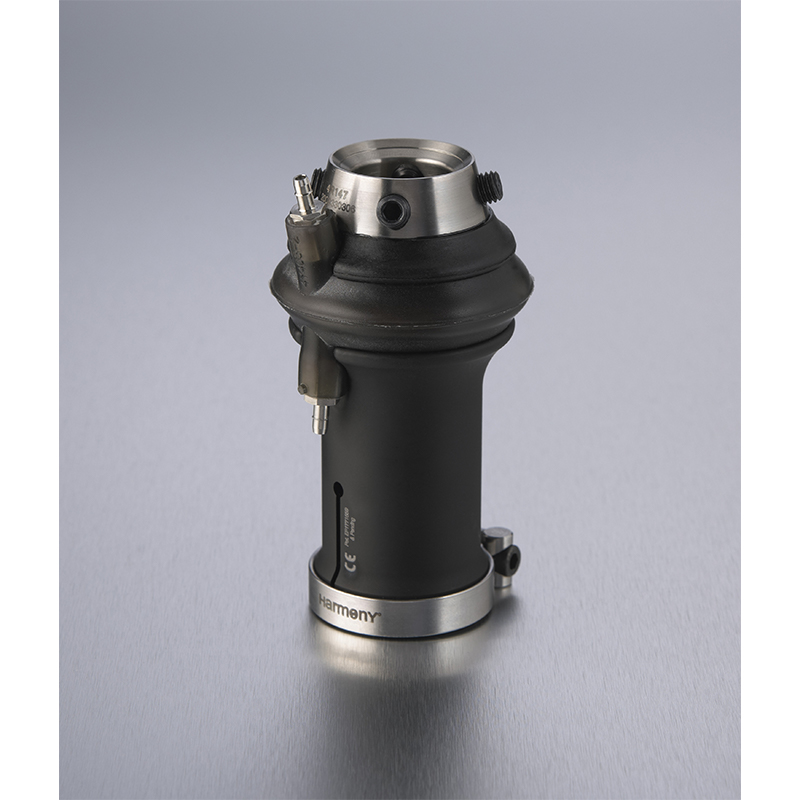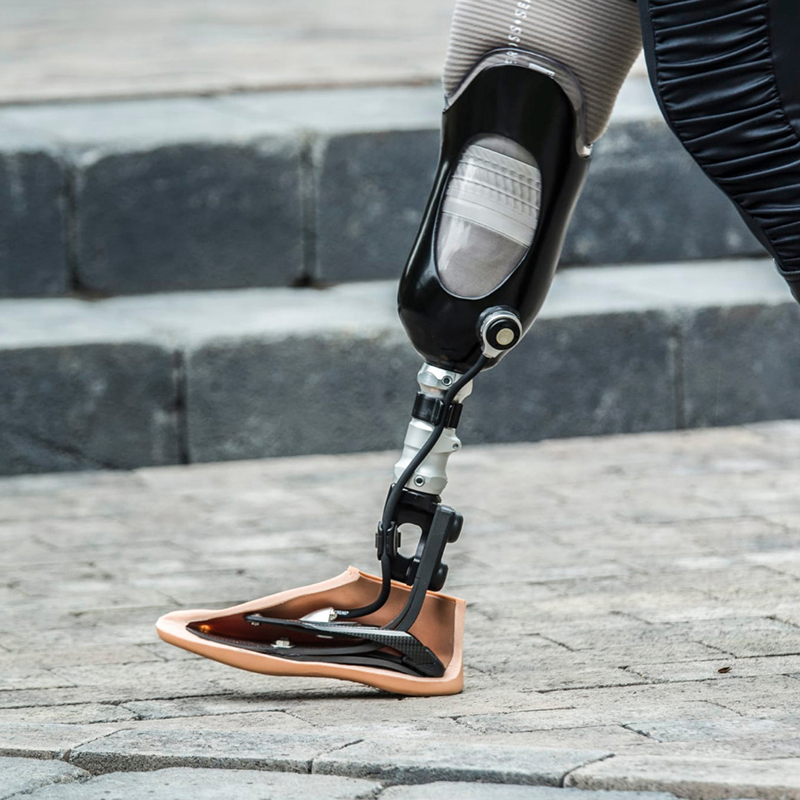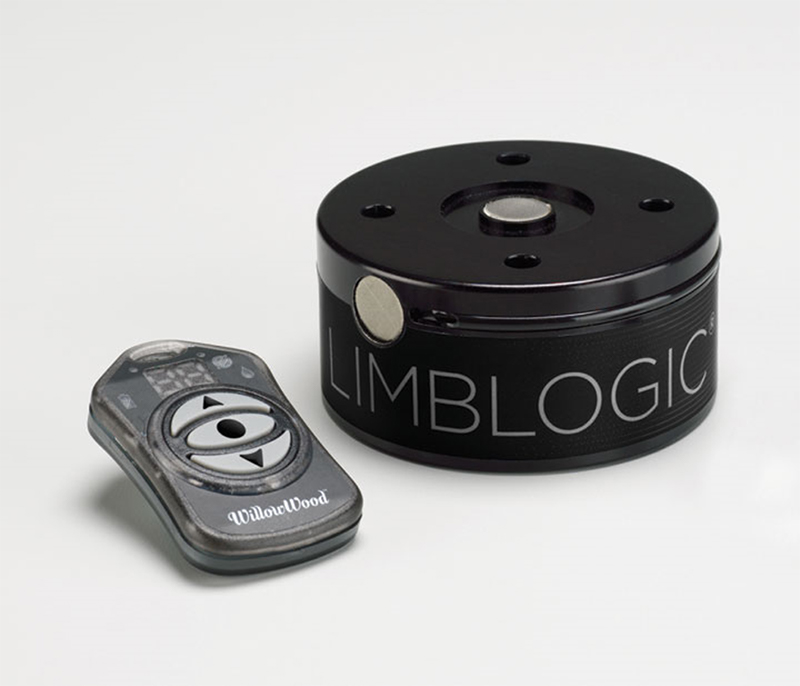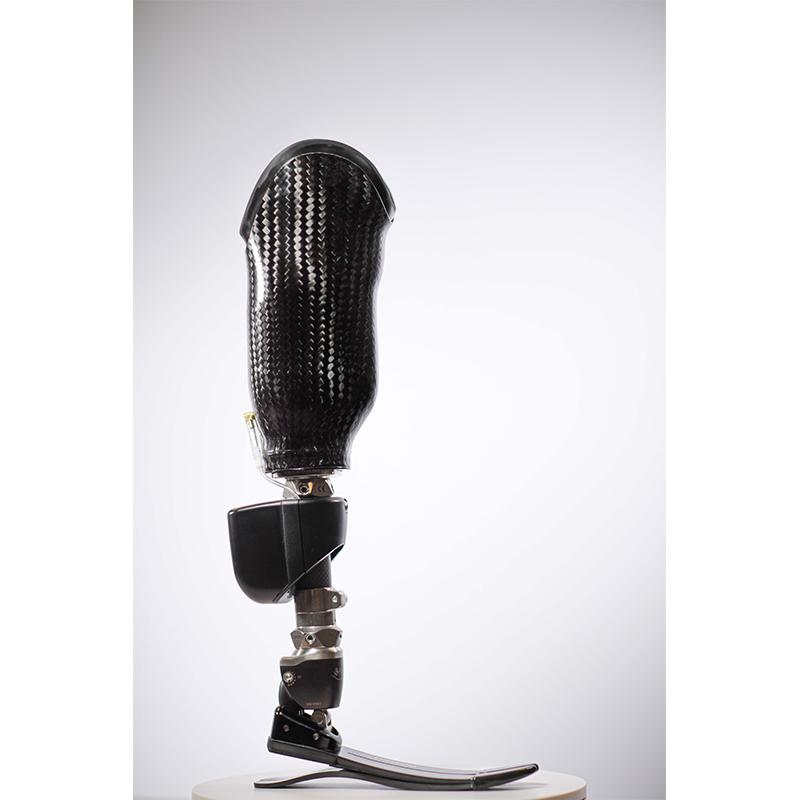Socket and Suspension
A patient’s success in using a prosthesis is dependent on one critical prosthetic component – the socket. The socket is the part of the prosthesis that attaches to the residual limb and enables the patient to control the other prosthetic components (elbow/wrist, or knee/foot). Since every residual limb is unique to the patient, each socket will have its own design and fit to provide comfort and functionality.
For Transtibial (Below Knee) Patients
Patellar Tendon Bearing (PTB) focuses on putting weight on areas of the limb that can tolerate pressures, such as the patella tendon (directly below the kneecap). The design eliminates pressure on sensitive areas of the limb. The PTB totally encloses the residual limb and usually contains a liner to provide a cushioning effect.
Total Surface Bearing (TSB) distributes the patient’s weight evenly over the soft tissue for a more comfortable fit.
Hydrostatic Weight Bearing is a specific version of the TSB design, incorporating a gel liner and cast in a compression environment to achieve uniform pressure distribution across the residual limb tissues. The design encourages tissue elongation within the liner, increasing padding at the distal residual limb.
Silicone Suction can be used by both above and below knee amputees. The silicone insert adheres to the skin by suction. Interlocking mechanisms on the distal end of the socket and the prosthesis create a pistonless socket connection.
For Transfemoral (Above Knee) Patients
Quadrilateral (Quad) is characterized by its four distinctly differently shaped proximal walls (nearer to the central portion of the body), which allow the muscles to function as much as possible. The Quad also has a broad, flat posterior shelf (back side of the body) for the pelvis to sit on.
Ischial Containment sockets are designed to contain the pelvis inside the socket; they have a larger dimension front-to-back and a narrower dimension from side-to-side. The primary benefit is to control the side-to-side shift of the socket on the upper thigh for more stability and more energy.
Total Contact socket completely conforms to the entire surface of the residual limb, though not necessarily with uniform pressure. The advantage includes less pressure on any given area of the limb, greater circulation, and increased proprioception (the sense of how end limbs are oriented in a space).
Suspension Holds the Prosthesis to the Residual Limb
Suction suspension is achieved either by total contact with the socket wall or with a roll-on suspension liner. The prosthetic limb fits snugly onto the residual limb, and an airtight seal keeps it in place. The socket has a one-way valve to expel the air out of the socket, which creates negative pressure in the socket to attain suspension.
Anatomic suspension (or supracondylar) is when the contours of the socket capture and hold onto the contours of the patient’s body. The user wears a soft insert with a wedge that locks into the socket and keeps the prosthesis on the limb.
Locking suspension utilizes a pin attached at the end of a liner. The pin connects to a shuttle lock built into the bottom of the socket. An above-knee prosthesis may use a lanyard system, which consists of a strap or braided string to pull the liner into the socket.
Straps and Belts are older suspension methods but may be used when suction or anatomical suspension is unavailable. Strap suspension schemes, often used in combination with a waist belt, are relatively easy for the wearer to adjust and therefore are sometimes a good choice for individuals likely to encounter substantial changes in residual limb volume, as in the weeks after amputation surgery.
A suprapatellar cuff, which encircles the thigh over the femoral condyles and attaches to the socket with straps, may be a good choice for transtibial patients who have good knee stability. It is normally used with a waist belt. A thigh corset with metal side joints, may be prescribed for transtibial amputees with a delicate residual limb unable to withstand full weight-bearing loads.
For transfemoral amputees who cannot use suction, a silesian belt, total elastic suspension (TES) belt, or hip joint and pelvic belt may be used for suspending the prosthesis.
Vacuum Suspension Systems
While many patients have successful outcomes with traditional socket systems, others who have had comfort and stability problems are finding improved fit and motion with vacuum suspension systems. Vacuum suspension consists of a sleeve creating a seal around the top edge of the socket, then a pump and exhaust valve
Ottobock’s Harmony P3 vacuum system creates an optimal limb environment with an elevated vacuum between the liner and socket wall, promoting natural fluid exchange and a secure fit, plus internal and external rotation for easier maneuvering and shock absorption.

Össur’s Unity Vacuum System offers the security and freedom of vacuum suspension without the sensation and restrictions of a sleeve. It effectively addresses volume fluctuations and is totally compatible with Flex-Foot technology. The Seal-In liner technology is designed to conform to the residual limb, helping to distribute pressure evenly at the distal end, where volume fluctuations typically occur. The Unity is for above- and below-knee amputees, low active or high active, mechanical or microprocessor knee users.

WillowWood’s LimbLogic electronic elevated vacuum system continually monitors a socket’s vacuum level, maintaining a secure fit. Amputees may use a handheld fob to increase or decrease the vacuum level as desired within the range set by the clinician. Regardless of the style used, the LimbLogic Controller is waterproof in fresh water to a depth of 3 meters (10 feet) for up to 12 hours at a time. The handheld fob should not be exposed to water.

iQ Vacuum from Freedom Innovations utilizes real-time responding sensors detect user’s changes in activity (walking vs. standing vs. sitting) to automatically adjust the vacuum pressure. Built-in leak detection capability provides reliable consistent socket comfort. iQ operates at the quietest noise level available in a normal environment, eliminating user embarrassment and annoyance. iQ Vacuum is protected against ingress of dust and submersion in water at a depth of 1 meter for up to 30 minutes, allowing user to withstand occasional wet environments.

The RUSH Foot EVAQ8 Collection is the easy solution to providing maximum vacuum efficiency in just a few quick steps. No batteries or complicated, mechanical pump required. The simple, integrated design stabilizes volume, increases linkage, and heightens proprioception through elevated vacuum suspension. The RUSH Foot EVAQ8 foot Collection is all-terrain, fully-submersible (fresh or saltwater), free of bulky components, and requires minimal maintenance. The RUSH Foot EVAQ8 Collection is available in the RAMPAGE LP, HiPro, RAMPAGE and ROGUE models providing the perfect option for the majority of individuals seeking elevated vacuum suspension.